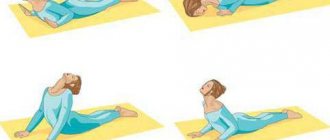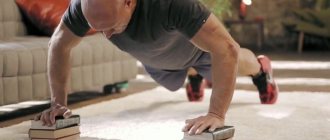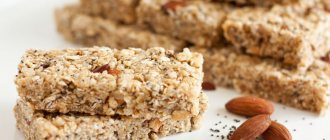Not all athletes, not to mention just physical education enthusiasts, know how to easily assess their own physical fitness. You can come up with some exercises yourself, doing them for a while, and then comparing the results with the achievements of other people. You can simply go to the doctors to undergo a full medical examination. However, it is much more convenient, faster and easier to take the Cooper test, which has already been developed in advance, the standards of which will show how strong your body is.
About the Cooper test
The Cooper test is several tests for the level of physical fitness and assessment of a person’s physical condition, united by a common name. The author of simple and functional tests is the American scientist-doctor Kenneth Cooper. The endurance tests were developed in 1968 for soldiers in the US Army.
The testing program contains about thirty tests, among which the most popular are running, swimming and cycling. Cooper's endurance tests are designed for people under 35 years of age. However, this does not mean that older people cannot find out their fitness level. Adequate physical preparation and following the test recommendations will help reduce health risks.
Cooper tests are aerobic in nature. This means that all cells in the body make maximum use of the oxygen they contain. This type of exercise eliminates oxygen starvation of the body and can be used by people with poor health. When performing all types of Cooper tests, about two-thirds of a person's muscles are involved. As a result of the load, the muscular system, as well as the respiratory and cardiovascular systems, are affected.
Features of this test
The main feature of these tests is their simplicity and ease of execution. In addition, they can be completed by people of any age - from 13-year-old teenagers to elderly people (50+).
During these tests, more than two-thirds of a person's muscle mass is used. The greatest load is carried out in connection with the use of oxygen by the athlete’s body.
Likewise, the test will evaluate how the body copes with stress, as well as how the respiratory and cardiovascular systems work.
Most popular tests
Cooper's treadmill test is the most popular - as the most accessible and easiest to perform. Its essence is that in twelve minutes you need to run as far as possible, as far as your health and physical fitness will allow you.
You can perform this test anywhere - on a special track, in a gym, in a park, but perhaps the best place for Cooper's running test is a stadium.
What does the Cooper test consist of?
Cooper's endurance tests are simple to perform but provide a comprehensive picture of a person's physical condition. A variety of Cooper tests are widely used in training young men for special forces. For an average person of average physical fitness, a running test would be most appropriate.
To conduct Cooper's running tests, all you need is a stopwatch and a flat treadmill.
The test consists of:
- Mandatory warm-up;
- Running/swimming or cycling part (12 minutes of work);
- Cool downs.
Additional factors that may affect the test result are temperature and humidity.
Next, you will learn how to prepare for the test to achieve maximum results.
How to run tests
Before performing any of the tests, it is necessary to do a 2-3 minute warm-up to prepare the body for physical work, and after completion, a cool-down. To cool down, you can use calm walking.
General developmental exercises for the main muscle groups are suitable as a warm-up; you can also use walking and light running.
The purpose of the warm-up is to increase the temperature in the muscles of the body, which, among other things, prevents the development of injuries, as well as to cause an increase in the activity of the cardiovascular and respiratory systems to ensure easier activation during the subsequent testing load.
It should be noted that test results will vary depending on the quality of the warm-up performed. Insufficient or no warm-up, as well as excessive warm-up that causes fatigue, will negatively affect the test results and its tolerability. Carrying out the test without preliminary warm-up can cause a sharp deterioration in well-being or provoke an exacerbation of an existing disease. An optimal warm-up will have a positive effect not only on the test results, but also on its tolerability.
Warm up before the test
To perform at your best and avoid health problems, be sure to warm up before the test. Warming up is an important condition before starting any type of testing, be it running, swimming or cycling. The time for warming up is individual for everyone. On average, 3 to 15 minutes may be sufficient.
It is important to remember that warm-up exercises are designed to prepare the muscles and body systems for the test, and not to tire you out ahead of time.
Running warm-up
- Walking at a fast pace around the stadium for 2-3 minutes;
- 30 seconds jogging
- 30 seconds walking at a fast pace;
- Repeat steps 2 and 3 5 times.
Next, you need to warm up your muscles with general strengthening exercises and stretching.
Exercises to warm up muscles
- fold your hands into a “lock” and move them behind your head as far as possible, then try to touch your shoulder blades with your hands;
- lie on your back and rise up without using your hands;
- bend forward and backward, and twist your torso to warm up your back muscles;
- Feet together. Knee rotation clockwise and counterclockwise;
- do squats to alert the muscles of the lower legs and thighs;
- Do a few push-ups to work the muscles in your arms and shoulders.
Exercise Testing
For those who have bad weather outside and are unable to run a distance, but want to test their endurance, we suggest trying another exercise from the Cooper complex. Do a full warm-up, then get started. Don't forget to time yourself before starting the test.
.
After completion, similar to other exercises, the results are checked against the standards. For this exercise:
- 3 minutes - very good
- 3 minutes 30 seconds - good
- 4 minutes is normal
- More than four minutes - low result, it’s worth working on the exercises
- If you doubt that you are doing the exercises correctly, watch the Cooper test video from an expert
How to perform the Cooper test
After the warm-up, which is the first stage of passing the test, the test itself begins.
The Cooper Running, Swimming and Cycling Test consists of running for 12 minutes.
Run
After the command “Start!” The subject begins to move on a flat treadmill. While passing the test, you can move to a step, but then it is unlikely that you will be able to pass the test with a good result. At the end of the time, the distance that the runner managed to cover is measured. The test result is correlated with a table of standards, after which a conclusion is drawn about the level of physical fitness of the test subject.
Swimming
The Cooper Swimming Test is conducted in a similar manner. The distance that a freestyle swimmer will cover in 12 minutes is taken into account and compared with the standard table.
Bike
It is advisable to carry out the Cooper cycling test in calm weather in the absence of wind and rain in order to minimize the influence of the environment on the athlete’s results. The test route must be flat, without ups or downs. The distance covered in 12 minutes is compared with the standard table.
12 minute cycling test
The 12-minute cycling test assesses the body's fitness and endurance based on the distance (in meters) covered by a person on a bicycle in 12 minutes. This Cooper test is recommended to be carried out in low wind conditions on a well-surfaced route that excludes steep ascents and descents.
Cooper 12-Minute Cycling Test Physical Fitness Score Chart
| Physical fitness | Distance covered, m | |||||
| Girls 13-19 years old | Women 20-29 years old | Women 30-39 years old | Boys 13-19 years old | Men 20-29 years old | Men 30-39 years old | |
| very bad | < 2800 | < 2400 | < 2000 | < 4200 | < 4000 | < 3600 |
| bad | 2800-4200 | 2400-4000 | 2000-3500 | 4200-6000 | 4000-5500 | 3600-5100 |
| satisfactory | 4200-6000 | 4000-5500 | 3600-5500 | 6000-7500 | 5600-7100 | 5200-6700 |
| good | 6000-7600 | 5600-7200 | 5200-6800 | 7600-9200 | 7200-8800 | 6800-8400 |
| excellent | > 7600 | > 7200 | > 6800 | > 9200 | > 8800 | > 8400 |
Speaking about the merits of his tests, Kenneth Cooper names the following, among others:
Cooper test results provide motivation to exercise
Observing the dynamics of test scores is a good incentive to continue studying and increases interest in them.
Test helps determine risk of heart disease
As already mentioned, the Cooper tests are based on physical activity that places sufficient demands on the cardiovascular system. Therefore, if the body copes well with such loads, we can talk about the good functional state of the cardiovascular system and its high resistance to the development of diseases. On the contrary, an organism that does not cope well with these loads has a weakened, poorly trained cardiovascular system, which is susceptible to various pathologies.
Healthy people can perform Cooper tests on their own.
Cooldown after Cooper test
Cooling down for any physical activity is just as important as warming up before swimming or running. Your heart will thank you for treating it with care and restoring your heart rate by gradually reducing the load. After running or cycling, just walk or jog for 5 minutes. After swimming, as a cool-down, you can swim 200-300 meters at a comfortable pace.
Swimming testing
For the more experienced, the Cooper complex includes an exercise such as swimming. Just like running, you need to warm up before swimming. Warming up will be a necessary activity before each endurance exercise in Cooper's assessment. 12 minutes are timed on a stopwatch and the distance in meters that the subject managed to swim is measured. Similar
, as in running, the results are compared with the table: Cooper test standards are different for different ages, as in other exercises.
Cooper test standard tables
For each type of test, Kenneth Cooper developed appropriate standards taking into account the age and gender of the subject. Using standard tables, you can assess the physical condition of men and women from 13 to 39 years old. Distances in the tables are indicated in meters.
Running standards table
Runners' fitness levels range from very poor to excellent.
Table of standards in swimming
The Cooper Swimming Test Standards Chart also lists six categories of test subjects, each with a level of physical condition ranging from poor to excellent.
Table of standards for cycling
The test standards for cycling differ from those for running or swimming only in the length of the distance that the test taker must cover.
Having determined the level of your physical fitness, you can proceed to calculating an important indicator - maximum oxygen consumption (MOC). Read about it further.
12 minute running test
The Cooper 12-Minute Run Test evaluates the body's fitness based on the distance (in meters) a person can run (or walk) in 12 minutes. It is assumed that the person is running throughout the test. If the test taker cannot cope with this requirement, you can go to a step, the stopwatch counting down 12 minutes does not stop. The longer a person walks rather than runs while performing the test, the worse the test result. After a 12-minute movement, the distance covered in meters is measured and physical fitness is assessed using the table.
Cooper 12-Minute Running Test Physical Fitness Assessment Chart
| Physical fitness | Distance covered, m | |||||
| Girls 13-19 years old | Women 20-29 years old | Women 30-39 years old | Boys 13-19 years old | Men 20-29 years old | Men 30-39 years old | |
| very bad | < 1600 | < 1550 | < 1500 | < 2100 | < 1950 | < 1900 |
| bad | 1600-1900 | 1550-1800 | 1500-1700 | 2100-2200 | 1950-2100 | 1900-2100 |
| satisfactory | 1900-2100 | 1800-1900 | 1700-1900 | 2200-2500 | 2100-2400 | 2100-2300 |
| good | 2100-2300 | 1900-2100 | 1900-2000 | 2500-2750 | 2400-2600 | 2300-2500 |
| excellent | 2300-2400 | 2100-2300 | 2100-2200 | 2750-3000 | 2600-2800 | 2500-2700 |
| excellent | > 2400 | > 2300 | > 2200 | > 3000 | > 2800 | > 2700 |
What is MIC and how to calculate it
Maximum oxygen consumption (MOC) is the maximum amount of oxygen expressed in milliliters that a person can consume in one minute. The result of the Cooper running test is used in the formula for determining MOC:
MPCml/min/kg=distance (m)-50545
MPC allows you to get an idea of the level of aerobic performance of the body. VO2 directly affects the average speed of an athlete:
- The higher the oxygen consumption rate, the faster the heart will pump blood through the veins;
- The faster the heart pumps blood, the more often the muscles receive nutrients;
- The more often muscles receive nutrients, the better they work;
- The better the muscles work, the greater the distance the athlete will cover.
MOC indicators differ for men and women. The age of the athlete also affects this indicator.
Average BMD of women
Average MPC for men
Tips for Successfully Passing the Cooper Test
The main condition for successfully passing the test is good health. Testing is stopped immediately if during the test the person feels:
- arrhythmia;
- tachycardia;
- dizziness;
- weakness;
- pain in the heart area.
Testing is not recommended frequently. After passing the test, avoid additional training and physical activity - give your body a chance to recover. Immediately after the test, it is forbidden to go to the sauna or take a hot shower to avoid overheating.
The following recommendations will allow you to avoid common mistakes when taking the Cooper test:
- Use a heart rate monitor to monitor your heart rate;
- Follow the correct running, swimming and pedaling technique;
- Run, swim or ride at a steady pace;
- Watch your breathing, don't talk;
- If necessary, use running knee pads and warming ointment for your joints.










